-
Telefone : +8618150976625
-
E-mail : Hello@MicrofiberLeather.com
Telefone : +8618150976625
E-mail : Hello@MicrofiberLeather.com
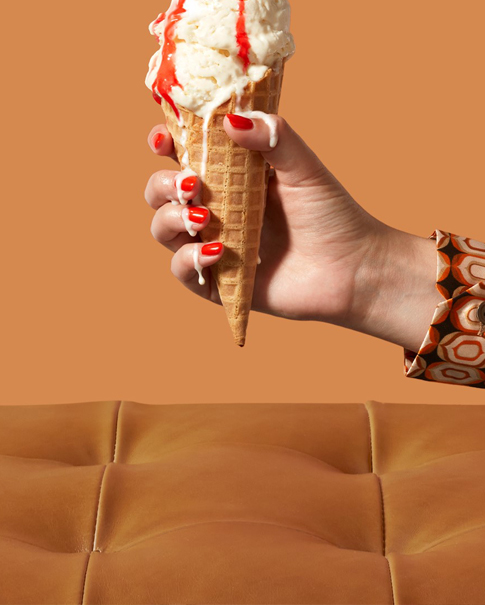
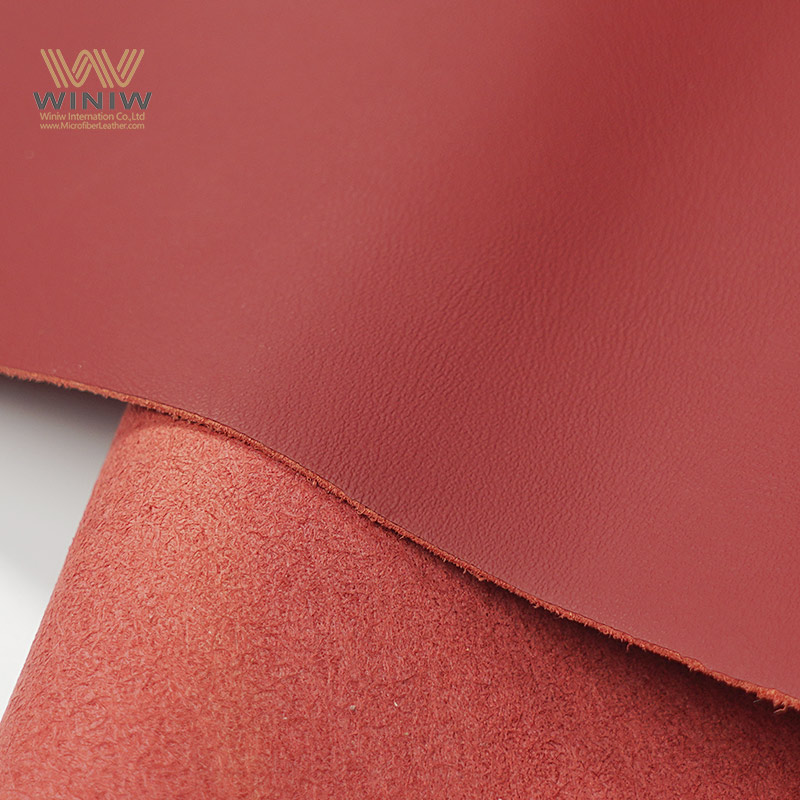
Quando compro couro sintético online, sigo uma lista de verificação rigorosa para garantir qualidade duradoura. Aqui estão as principais dicas que utilizo:
Solicite amostras físicas antes de fazer compras em grande quantidade.
Examine a textura, a maciez e os veios da superfície para verificar a autenticidade.
Verifique a espessura, o peso e o revestimento para garantir a durabilidade.
Inspecione as costuras e os componentes metálicos para garantir uma construção sólida.
Procure por certificações e informações detalhadas sobre o produto.
Analise a reputação do vendedor, as políticas e o feedback dos clientes.
Compare os preços para identificar ofertas irreais.
Faça perguntas específicas aos vendedores sobre personalização e envio.
Recomendo usar essas dicas como um guia de compras para todas as suas aquisições.
Solicite amostras físicas antes de comprar. Verifique a textura e a qualidade..
Examine o espessura e peso do material para maior durabilidade.
Inspecione as costuras e os componentes metálicos para garantir uma construção sólida.
Procure por descrições detalhadas do produto e certificações para garantir a qualidade.
Pesquise a reputação do vendedor e leia avaliações de clientes para verificar a confiabilidade.
Desconfie de ofertas que parecem boas demais para ser verdade; elas geralmente indicam baixa qualidade.
Antes de comprar, faça perguntas específicas sobre personalização e envio.
Verifique a garantia e a política de devolução para proteger seu investimento.
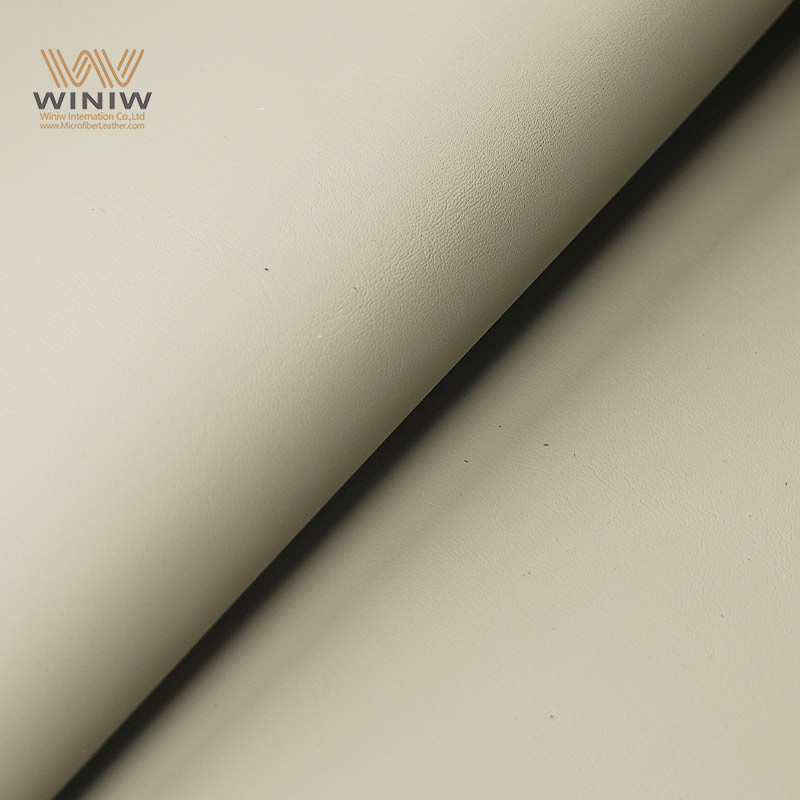
Ao avaliar materiais de couro sintético PU, sempre começo pela textura. A textura certa define o conjunto. couro vegano de alta qualidade além de barato Couro do falsoPasso os dedos pela superfície para verificar se a textura é uniforme. Evito qualquer material que pareça plástico ou pegajoso. Autêntico couro vegano Imita as irregularidades sutis do couro verdadeiro, enquanto o couro sintético de baixa qualidade geralmente tem uma aparência muito uniforme.
A textura da superfície me diz muito sobre a qualidade do trabalho artesanal por trás do couro vegano. Busco um padrão natural e ligeiramente variado. Se a textura parecer estampada ou repetitiva, sei que estou lidando com couro sintético produzido em massa. Também comparo amostras lado a lado. O melhor couro vegano sempre se destaca pela textura realista e pelo apelo tátil.
Descrição | |
|---|---|
Qualidade do produto | Consistência, toque e durabilidade dos produtos em couro sintético PU. |
Inovação e P&D | Adoção de processos ecológicos, novos acabamentos e texturas. |
Certificações e Conformidade | Conformidade com os padrões da indústria, segurança e certificações ambientais. |
Esta tabela me ajuda a lembrar o que procurar ao avaliar a textura do couro vegano. Busco consistência, um toque agradável e atenção visível aos detalhes.
A maciez é outro fator crucial. Eu pressiono o couro vegano entre os dedos. O couro vegano de alta qualidade é flexível, não rígido ou emborrachado. Evito couro sintético que seja duro ou quebradiço, pois provavelmente irá rachar com o tempo. Também levo em consideração a respirabilidade. Um bom couro vegano permite alguma circulação de ar, o que evita desconforto durante o uso prolongado. Ao comparar amostras, percebo que o couro vegano premium é sempre mais macio e flexível do que o couro sintético básico.
A espessura e o peso desempenham um papel fundamental na durabilidade do couro vegano. Sempre verifico a espessura antes de tomar uma decisão. Para móveis, procuro couro vegano com a seguinte espessura: Faixa de 1,0 mm a 2,0 mmOs assentos automotivos exigem couro vegano mais espesso, geralmente com base de espuma para maior conforto e resistência.
Aplicativo | Faixa de espessura recomendada |
|---|---|
Mobília | 1,0 mm - 2,0 mm |
Assentos automotivos | Mais espesso, com base de espuma. |
Uso esta tabela como referência rápida quando compro couro vegano. Se um vendedor não consegue fornecer detalhes sobre a espessura, considero isso um sinal de alerta. Também peso o material na minha mão. Couro vegano mais pesado geralmente significa maior durabilidade, enquanto couro sintético leve costuma indicar menor qualidade.
O revestimento do couro vegano revela muito sobre sua construção. Sempre inspeciono a parte de baixo em busca de um tecido resistente e trançado. Um revestimento frágil ou fino significa que o couro vegano rasgará com facilidade. Também presto muita atenção ao odor. Couro vegano de alta qualidade deve ter pouco ou nenhum cheiro. Se eu detectar um forte odor químico, sei que estou lidando com couro sintético de baixa qualidade.
Tipo de material | |
|---|---|
Couro genuíno | Aroma rico e terroso |
Sintético/Baixa qualidade | Cheiro desagradável ou químico |
Esta tabela me lembra de confiar no meu olfato. Um forte cheiro químico é um sinal de alerta de que o couro vegano contém materiais baratos ou substâncias químicas nocivas. Eu sempre rejeito couro sintético com qualquer odor desagradável.
Dica: Nunca confio apenas em imagens online. Sempre solicito amostras físicas para verificar a textura, a maciez, a espessura e o odor pessoalmente. Essa etapa me evita erros dispendiosos e garante que eu compre apenas o melhor couro vegano para meus projetos.
Ao inspecionar materiais de couro sintético PU, sempre presto muita atenção às costuras. Costuras de qualidade indicam durabilidade e fabricação cuidadosa. Procuro por pontos retos e uniformes que sigam a mesma linha das costuras. Fios soltos ou linhas irregulares sugerem acabamento ruim. Evito materiais com pontos falhados ou bordas desfiadas, pois esses defeitos geralmente levam ao desgaste prematuro.
Utilizo esta lista de verificação para avaliar a qualidade da costura:
Densidade de pontos: Conto os pontos por polegada. Costuras de alta densidade resultam em costuras mais resistentes.
Qualidade da linha: Verifico se a linha é grossa e lisa. Linhas finas ou felpudas quebram com facilidade.
Alinhamento das costuras: Verifico se as costuras se encaixam perfeitamente. Costuras desalinhadas enfraquecem a estrutura.
Áreas Reforçadas: Procuro por costuras extras em pontos de tensão, como cantos e bordas.
Dica: Eu sempre puxo delicadamente as costuras para testar a resistência. Se os pontos estiverem firmes, sei que o material vai durar mais.
Recurso de costura | O que eu procuro | O que eu evito |
|---|---|---|
Densidade de pontos | 6 a 8 pontos por polegada | Espaçamento esparso ou irregular |
Qualidade da linha | Espesso, liso, com cor combinando | Fino, desfiado, incompatível |
Alinhamento de costura | Costuras retas e precisas | Costuras tortas ou desalinhadas |
Reforço | Costura dupla ou tripla | Costura simples e frágil |
Costuras consistentes e de alta qualidade me dão confiança na durabilidade do produto. Nunca abro mão desse detalhe.
Os componentes metálicos desempenham um papel crucial na qualidade geral dos produtos em couro sintético PU. Sempre examino zíperes, fivelas, botões de pressão e outros componentes de metal. Componentes metálicos de alta qualidade são robustos e têm um acabamento liso. Componentes leves ou frágeis geralmente quebram ou perdem o brilho rapidamente.
Sigo estes passos ao verificar o hardware:
Teste de peso: Seguro a peça na mão. Peças mais pesadas geralmente indicam melhor qualidade do metal.
Inspeção de acabamento: Procuro uma superfície uniforme e polida. Arranhões ou áreas ásperas indicam má qualidade de fabricação.
Verificação de funcionalidade: Abro e fecho zíperes, botões de pressão e ajusto fivelas. Funcionamento suave significa ferragens confiáveis.
Resistência à corrosão: Pergunto aos vendedores se as peças são resistentes à ferrugem, especialmente para aplicações externas ou marítimas.
Observação: Sempre solicito fotos detalhadas dos componentes antes de comprar online. Se possível, peço uma amostra para testar o componente pessoalmente.
Tipo de hardware | Indicadores de Qualidade | Sinais de alerta |
|---|---|---|
Zíperes | Metal, deslizamento suave | Movimento plástico e pegajoso |
Fivelas | Acabamento pesado e polido | Leve, com bordas ásperas |
Estalos | Fechamento firme, sem oscilação | Ajuste folgado, aderência fraca |
Ferragens de alta qualidade melhoram tanto a aparência quanto a durabilidade dos produtos em couro sintético PU. Nunca ignoro esse detalhe ao fazer uma compra.
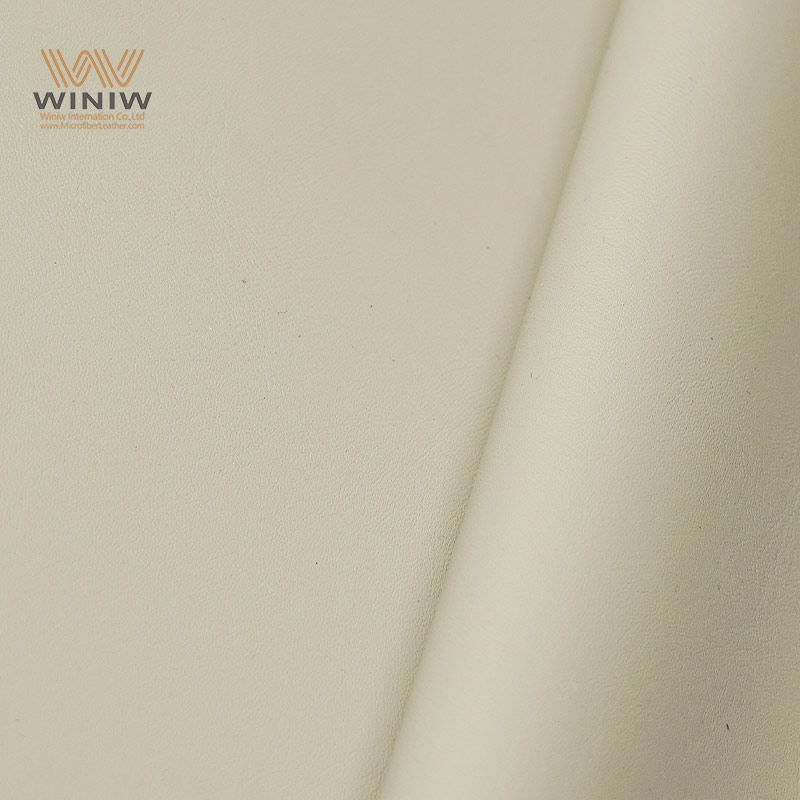
Quando eu compro para couro veganoSempre presto muita atenção aos detalhes e certificações dos produtos. Esses detalhes me ajudam a avaliar a verdadeira qualidade e durabilidade do material. Nunca me baseio em descrições vagas. Busco informações claras e específicas que atendam às minhas necessidades.
Uma descrição detalhada do produto me informa se o couro vegano é adequado para o meu projeto. Verifico os dados técnicos e as classificações de desempenho. Também me certifico de que o vendedor indique o uso pretendido, como estofamento, aplicações automotivas ou náuticas. Essas informações me ajudam a evitar erros dispendiosos.
Sempre pergunto sobre a durabilidade. Quero saber o quão bem o couro vegano resiste ao uso diário. Procuro resultados de testes de abrasão, como as classificações Martindale ou Wyzenbeek. Números altos significam maior resistência a arranhões e riscos. Uso esses dados para comparar diferentes opções.
A resistência a rasgos é importante para mim, especialmente em móveis ou assentos de carro. Verifico a classificação de resistência a rasgos na descrição do produto. O couro vegano resistente suporta rasgos e estiramentos. Se o vendedor não puder fornecer essa informação, considero um sinal de alerta.
A resistência à tração indica quanta força o couro vegano suporta antes de se romper. Sempre procuro por esse número nas especificações técnicas. Alta resistência à tração significa maior durabilidade e vida útil mais longa. Uso esses dados para escolher o material certo para itens de uso intenso.
A classificação de resistência a rachaduras por frio indica se o couro vegano suporta baixas temperaturas sem rachar. Dou especial atenção a esse detalhe em projetos para uso externo ou náutico. Busco materiais testados a pelo menos -20°C. Essa classificação me dá confiança na durabilidade do produto.
Tipo de teste | O que eu procuro | Por que isso importa |
|---|---|---|
Vestibilidade | Alta resistência à abrasão | Resiste ao uso diário. |
Capacidade de rasgar | Alta resistência ao rasgo | Impede rasgos |
Resistência à tracção | Alta tolerância à força | Aumenta a durabilidade |
Rachadura Fria | Classificação de baixa temperatura | Resiste a rachaduras |
Dica: Sempre peço as fichas técnicas ao vendedor. Essas fichas me fornecem as informações necessárias para fazer uma escolha consciente.
As certificações me dão tranquilidade na hora de comprar couro vegano. Procuro por selos de terceiros que comprovem que o material atende aos padrões da indústria. Certificações como OEKO-TEX, REACH ou ISO 9001 demonstram que o couro vegano é seguro, ecológico e durável. Também verifico a resistência ao fogo ou a proteção UV, caso precise dessas características.
Utilizo esta lista de verificação quando analiso certificações:
OEKO-TEX: Confirma que o couro vegano está livre de substâncias químicas nocivas.
REACH: Garante a conformidade com as normas de segurança europeias.
ISO 9001: Comprova que o fabricante segue rigorosos controles de qualidade.
Classificação UV/FIRE: Importante para uso externo ou comercial.
Observação: Sempre peço ao vendedor cópias dos certificados. Não confio em alegações sem provas.
As certificações e as descrições detalhadas dos produtos me ajudam a escolher. material de couro sintético PU que oferece qualidade e durabilidade. Nunca pulo esta etapa porque ela protege meu investimento e garante que meus projetos durem.
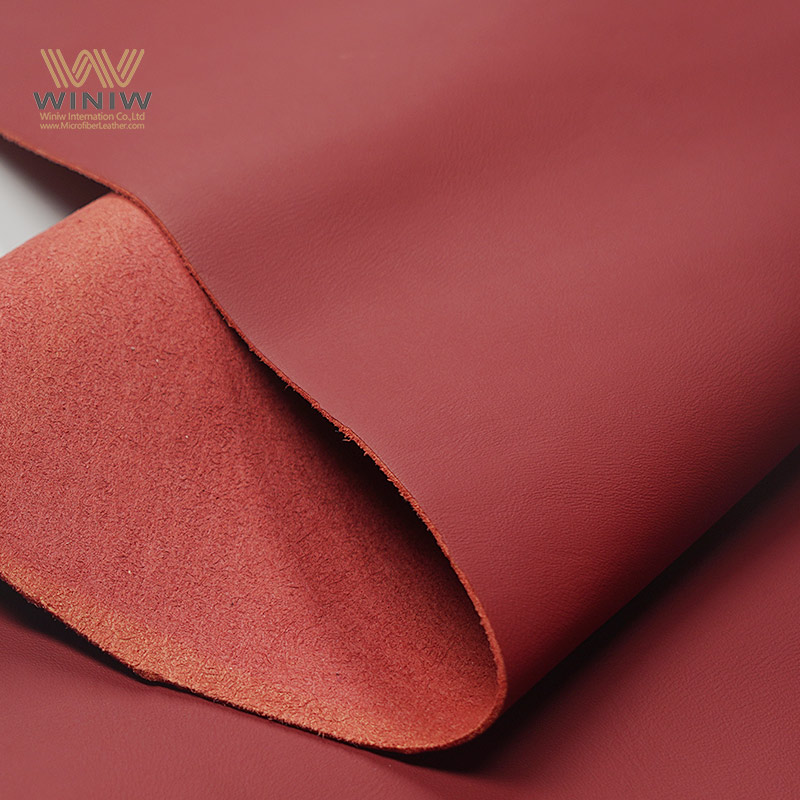
Quando compro couro vegano online, sempre começo verificando a reputação do vendedor. Procuro empresas estabelecidas com um histórico comprovado. Visito o site delas e verifico há quanto tempo atuam no setor de couro vegano. Também procuro por prêmios ou reconhecimentos do setor. Vendedores confiáveis geralmente exibem suas licenças e certificações. Confio em vendedores que são transparentes sobre seus processos de fornecimento e fabricação. Se um vendedor esconde informações ou evita perguntas, considero isso um sinal de alerta.
Eu uso esta lista de verificação rápida para avaliar a reputação:
Anos de atividade
Transparência sobre a origem do couro vegano
Prêmios ou certificações do setor
Informações de contato claras
Um vendedor de boa reputação valoriza a confiança do cliente e garante a qualidade de seus produtos de couro vegano.
As avaliações dos clientes me dão uma visão real da confiabilidade do vendedor e do desempenho do couro vegano. Leio tanto as avaliações positivas quanto as negativas para ter uma visão equilibrada. Presto atenção especial aos comentários sobre a consistência do produto, prazos de entrega e atendimento ao cliente. Se vejo reclamações repetidas sobre rachaduras, desbotamento ou mau cheiro no couro vegano, evito esse vendedor. Também procuro fotos enviadas pelos compradores. Essas imagens me ajudam a avaliar a verdadeira aparência e textura do couro vegano.
Dica: Eu sempre consulto várias plataformas de avaliação, não apenas o site do vendedor. Sites independentes costumam fornecer avaliações mais honestas.
Confio em avaliações que mencionam detalhes específicos sobre o couro vegano, como maciez, costura e durabilidade. Avaliações genéricas não me ajudam a tomar uma decisão informada.
Aspecto de revisão | O que eu procuro | O que eu evito |
|---|---|---|
Consistência do produto | Mesma qualidade do couro vegano | Relatórios de defeitos |
Atendimento ao Cliente | Respostas rápidas e úteis | reclamações não respondidas |
Entrega | Embalagem segura e pontual | Atrasos, mercadorias danificadas |
Uma política de devolução clara me protege caso o couro vegano não atenda às minhas expectativas. Sempre leio os termos de devolução antes de comprar. Verifico quantos dias tenho para devolver o couro vegano e se há alguma taxa de reabastecimento. Também verifico se o vendedor cobre os custos de envio para devoluções. Uma política de devolução justa demonstra que o vendedor preza pela qualidade do seu couro vegano.
Se um vendedor se recusar a aceitar devoluções ou dificultar o processo, procuro outro vendedor. Quero ter a opção de devolver o couro vegano caso chegue danificado, com cheiro forte de produtos químicos ou não corresponda à descrição. Também verifico se o vendedor oferece trocas ou crédito na loja.
Observação: Sempre guardo todas as confirmações de pedido e comunicações com o vendedor. Essa documentação é útil caso eu precise iniciar uma devolução.
Uma política de devolução rigorosa me dá confiança para experimentar novos fornecedores de couro vegano sem arriscar meu investimento.
Quando eu compro para Material de couro sintético PUSempre verifico a garantia antes de fazer uma compra. Uma garantia sólida me indica que o vendedor confia no seu produto. Também me dá tranquilidade caso algo dê errado após a compra. Nunca deixo de verificar, pois uma garantia pode me proteger de custos inesperados e de decepções.
Procuro estas características principais numa garantia:
Duração da cobertura: Prefiro garantias com duração mínima de um ano. Uma cobertura mais longa demonstra a confiança do vendedor no couro sintético PU que ele produz.
Âmbito da proteção: Li as letras miúdas para ver o que a garantia cobre. Quero proteção contra defeitos como descascamento, rachaduras, desbotamento ou falhas de hardware.
Processo de Reclamação: Estou verificando como registrar uma reclamação. Um processo simples e direto significa menos complicações caso eu precise usar a garantia.
Exclusões: Presto atenção ao que a garantia não cobre. Alguns vendedores excluem danos causados por uso indevido, acidentes ou exposição a produtos químicos agressivos.
Comprovante de compra: Sempre guardo meus recibos e confirmações de compra. A maioria dos vendedores exige comprovante para honrar a garantia.
Dica: Se os detalhes da garantia não estiverem claros, entro em contato diretamente com o vendedor. Peço uma cópia da política de garantia por escrito. Essa medida me ajuda a evitar mal-entendidos posteriormente.
Aqui está uma tabela que uso para comparar as garantias de diferentes vendedores:
Recurso de garantia | O que eu procuro | Sinais de alerta |
|---|---|---|
Comprimento | 1 ano ou mais | Menos de 6 meses |
Cobertura | Defeitos, desbotamento, descascamento, ferragens | Cobre apenas erros de fabricação |
Processo de Reclamação | Instruções fáceis e claras | Etapas complicadas e vagas |
Exclusões | Razoável, claramente listado | Muitas exclusões, termos pouco claros |
Comprovação necessária | Comprovante de compra simples | Documentação excessiva necessária |
Sempre escolho vendedores que oferecem garantias transparentes e justas. Se um vendedor se recusa a fornecer detalhes da garantia ou dificulta o processo, considero isso um sinal de alerta. Quero ter a certeza de que, se o meu material de couro sintético PU apresentar defeito, poderei obter uma substituição ou reembolso sem dificuldades.
Uma boa garantia não só protege meu investimento, como também demonstra o compromisso do vendedor com a qualidade. Eu uso as informações da garantia como uma verificação final antes de comprar. Esse hábito já me poupou dinheiro e frustração muitas vezes.
Observação: Recomendo que você leia atentamente todas as políticas de garantia. Nunca presuma que todas as garantias oferecem a mesma proteção. Tire suas dúvidas até se sentir seguro(a) com a sua compra.
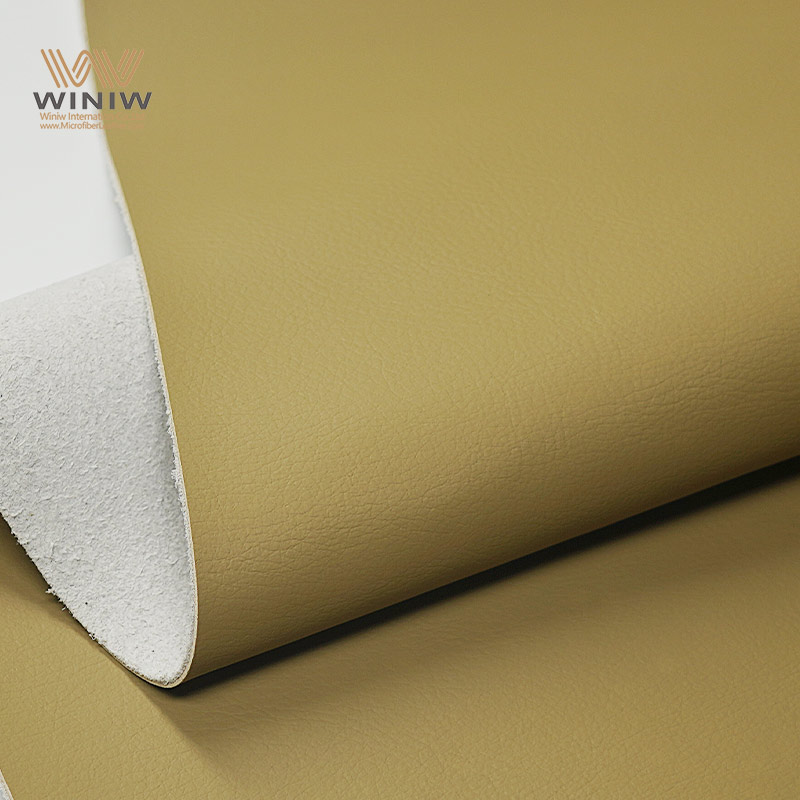
Quando compro couro sintético PU online, sempre começo examinando as imagens do produto. Fotos em alta resolução me ajudam a avaliar a textura da superfície, a costura e a fidelidade da cor. Procuro anúncios que mostrem o material de vários ângulos, incluindo fotos em close do couro e do verso. Se um vendedor fornece apenas uma ou duas imagens borradas, considero isso um sinal de alerta. Quero ver o material sob luz natural, não apenas sob iluminação de estúdio, pois isso revela a cor e a textura reais.
Dica: Sempre peço imagens adicionais se o anúncio não mostrar detalhes suficientes. Vendedores que hesitam em fornecer mais fotos geralmente têm algo a esconder.
Também comparo as imagens com outros anúncios. Às vezes, noto a mesma foto sendo usada por diferentes vendedores. Isso indica que o vendedor pode não ter o produto em estoque ou pode estar vendendo couro sintético como se fosse outra coisa.
Eu nunca me baseio apenas em imagens. Sempre solicito amostras físicas antes de fazer uma compra grande. Tocar e sentir o material me dá uma noção muito melhor da sua qualidade do que qualquer foto pode proporcionar. Verifico a maciez, a espessura e a flexibilidade da amostra. Também inspeciono o verso e testo se há algum odor desagradável.
Aqui está um breve exemplo de lista de verificação:
consistência do grão da superfície
Maciez e flexibilidade
Força de apoio
Verificação de odor
Precisão de cores
Se um vendedor se recusar a enviar amostras ou cobrar uma taxa exorbitante, eu prossigo. Vendedores confiáveis entendem que os compradores querem evitar couro sintético de baixa qualidade e fornecerão amostras com prazer.
Eu sempre verificar o tipo de material Antes de comprar, eu me preocupo. Alguns vendedores rotulam couro sintético como couro genuíno ou usam termos enganosos como "couro artificial" sem fornecer detalhes claros. Eu leio a descrição do produto atentamente e faço perguntas diretas sobre a composição. Quero saber a porcentagem exata de poliuretano, o tipo de base e se o material contém couro verdadeiro.
Etapa de verificação | O que eu pergunto ou verifico |
|---|---|
É 100% PU ou uma mistura? | |
Comunicação com o vendedor | Você pode confirmar se não se trata de couro sintético rotulado como genuíno? |
Certificações | Você possui comprovante de autenticidade? |
Observação: Sempre guardo um registro da minha comunicação com o vendedor. Se eu receber couro sintético quando encomendei couro PU, tenho provas para sustentar minha reclamação.
Também fico atenta aos anúncios que usam imagens de banco de imagens ou descrições genéricas. Isso geralmente indica que o vendedor pode estar substituindo materiais de melhor qualidade por couro sintético. Mantendo-me vigilante e fazendo as perguntas certas, me protejo de erros dispendiosos.
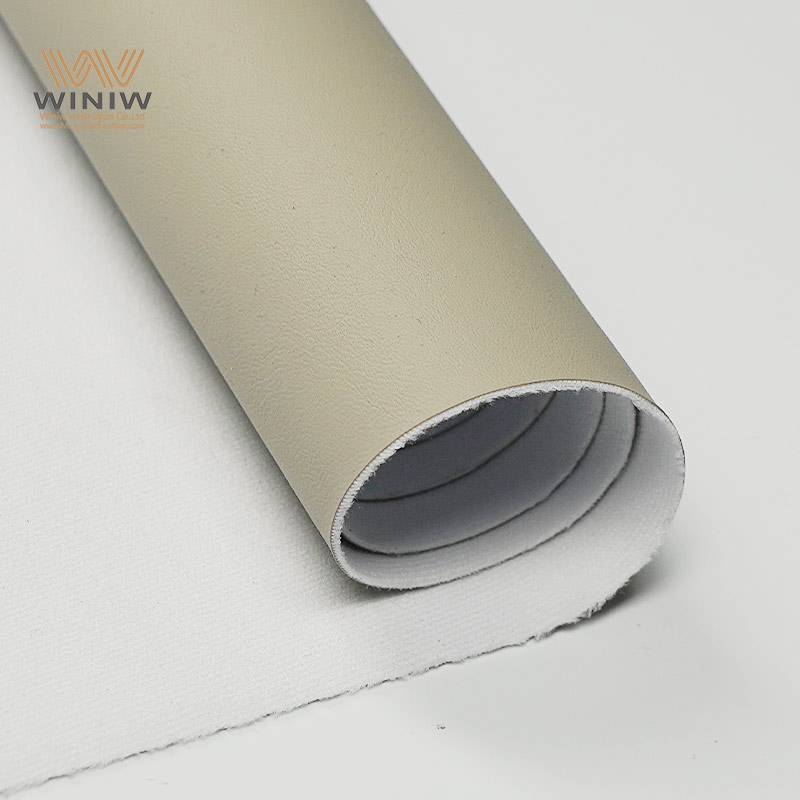
Quando compro artigos de couro vegano, sempre fico atenta a ofertas que parecem boas demais para ser verdade. Aprendi que preços extremamente baixos geralmente indicam algum problema. couro sintético de má qualidade ou com descrição enganosaMuitos vendedores usam imagens atraentes e descrições vagas para atrair compradores. Eu nunca confio em anúncios que oferecem couro vegano a uma fração do preço de mercado típico. Se vejo um rolo grande de couro sintético com preço muito abaixo da concorrência, questiono a autenticidade e a durabilidade.
Eu uso esta lista de verificação para identificar sinais de alerta:
O vendedor fornece pouca ou nenhuma informação sobre a composição do couro vegano.
As imagens dos produtos parecem genéricas ou aparecem em vários anúncios não relacionados.
O preço é muito inferior ao de produtos similares em couro vegano de fornecedores conceituados.
O vendedor se recusa a enviar amostras ou fichas técnicas.
As avaliações dos clientes mencionam problemas como descascamento, rachaduras ou fortes odores químicos.
Sempre me lembro de que couro vegano de qualidade exige materiais e processos de fabricação adequados. Ofertas irreais geralmente significam que o vendedor economizou em tudo, resultando em couro sintético que não dura.
Equilibrar custo e durabilidade é essencial quando escolho couro vegano para meus projetos. Considero o desempenho do material ao longo do tempo, não apenas o preço inicial. Descobri que investir em couro vegano de alta qualidade Economiza dinheiro a longo prazo porque resiste melhor ao desgaste, ao desbotamento e ao rachamento do que o couro sintético barato.
Ao comparar opções, levo em consideração diversos fatores:
Reputação do fornecedor: Prefiro fornecedores com confiabilidade comprovada, altas avaliações e um alto volume de pedidos. Alguns fornecedores, como aqueles que trabalham com empresas da Fortune 500, oferecem tranquilidade.
Flexibilidade de encomenda: Para marcas de alta qualidade e durabilidade, considero o couro sintético PU de fornecedores com quantidades mínimas de encomenda mais elevadas, como... Shenzhen OJRO couro vegano deles custa mais por unidade, mas a qualidade justifica o preço.
Necessidades orçamentárias: Para necessidades com restrições de custo ou em grandes volumes, às vezes opto por opções de couro sintético mais acessíveis de fornecedores como Ningbo Greenpattern ou Yiwu Jieshi. Esses fornecedores oferecem preços mais baixos para pedidos maiores, mas sempre verifico sua confiabilidade e o feedback dos clientes.
Encomendas de pequeno porte: Quando preciso de flexibilidade, procuro fornecedores como a SL INDUSTRIAL HK ou a Fuzhou Liangmei. Eles permitem quantidades de encomenda menores, o que me ajuda a testar a qualidade do couro vegano antes de me comprometer com uma compra em grande quantidade.
Tipo de fornecedor | MOQ | Faixa de preço | Ideal para |
|---|---|---|---|
Premium (Shenzhen OJR) | 300 caixas | $ 3,20 - $ 3,80 | Marca, durabilidade |
Orçamento (Padrão Verde de Ningbo) | 500 | $0,17-$0,19 | Alto volume, sensível a custos |
Flexível (SL INDUSTRIAL HK) | 2 peças | $ 1,37 - $ 2,37 | Encomendas pequenas, teste de qualidade. |
Sempre levo em consideração a vida útil esperada do couro vegano em relação ao preço inicial. Se compro couro sintético barato, muitas vezes acabo tendo que substituí-lo antes do previsto, o que aumenta meus custos totais. Ao escolher couro vegano durável de fornecedores confiáveis, protejo meu investimento e garanto que meus projetos fiquem ótimos por muitos anos.
Meu conselho: Nunca sacrifique a qualidade por um preço baixo. Couro vegano confiável compensa com melhor desempenho e menos dores de cabeça.
Antes de finalizar qualquer compra de couro sintético PU, sempre entro em contato com o vendedor com um conjunto específico de perguntas. Essa etapa me ajuda a evitar surpresas e garante que eu receba exatamente o que preciso para o meu projeto. Ao longo dos anos, aprendi que a comunicação clara com o fornecedor muitas vezes faz toda a diferença entre um pedido bem-sucedido e um erro dispendioso.
Começo por perguntar sobre o fonte e autenticidade do material. Quero saber de onde vem o couro sintético PU e se o fornecedor pode fornecer documentação ou certificações. Pergunto: "Vocês podem confirmar o país de origem e fornecer certificados como OEKO-TEX ou REACH?" Vendedores confiáveis respondem rapidamente e fornecem comprovantes sem hesitar.
Em seguida, eu me concentro em opções de personalizaçãoMeus projetos frequentemente exigem texturas, cores ou espessuras específicasPergunto ao vendedor:
Você consegue reproduzir uma cor ou textura específica?
Vocês oferecem espessuras personalizadas para atender às minhas necessidades de projeto?
Qual é a quantidade mínima para encomendas personalizadas?
Quanto tempo demora a personalização e existem custos adicionais?
Sempre confirmo se o fornecedor pode fornecer as especificações exatas de que preciso. Essa etapa me impede de aceitar materiais genéricos que não atendem aos meus padrões.
Os detalhes de envio são tão importantes quanto a qualidade do produto. Eu pergunto:
Quais métodos de envio vocês oferecem?
Quanto tempo levará a entrega até o meu endereço?
Você pode me fornecer as informações de rastreamento assim que o pedido for enviado?
Há alguma taxa de envio adicional ou imposto de importação que eu deva esperar?
Dica: Sempre solicito uma confirmação por escrito dos prazos e custos de envio. Isso me ajuda a planejar o cronograma e o orçamento do meu projeto com precisão.
Eu também me aprofundo em especificações do materialSolicito fichas técnicas que descrevam a resistência ao desgaste, a resistência à tração e a resistência a rachaduras por frio. Quero saber se o couro sintético de PU suportará condições reais de uso. Pergunto: "Podem me enviar uma amostra ou uma ficha técnica detalhada com as classificações de desempenho?"
Aqui está uma tabela que uso para organizar minhas perguntas e as respostas do vendedor:
Área de perguntas | O que eu pergunto | Por que isso importa |
|---|---|---|
Fonte | País de origem, certificações | Garante a autenticidade |
Personalização | Cor, textura, espessura, quantidade mínima de encomenda, prazo de entrega, custos | Atende aos requisitos do projeto |
Envio | Métodos, cronogramas, rastreamento, taxas | Evita surpresas na entrega. |
Especificações do material | Dados técnicos, amostras, classificações de desempenho | Confirma a durabilidade e a qualidade. |
Ao fazer essas perguntas, protejo meu investimento e estabeleço expectativas claras com o vendedor. Nunca pulo essa etapa, não importa quão confiável o fornecedor pareça. A comunicação aberta leva a melhores resultados e menos dores de cabeça no futuro.
Sempre confio na minha lista de verificação para garantir que compro material de couro sintético PU de alta qualidade. Pesquisa cuidadosa, atenção aos detalhes e perguntas diretas me ajudam a evitar erros dispendiosos. Recomendo analisar cada produto, vendedor e política antes de fechar negócio. essas dicas Para orientar sua próxima compra. Faça escolhas conscientes e invista em materiais duráveis. Seus projetos merecem o melhor.
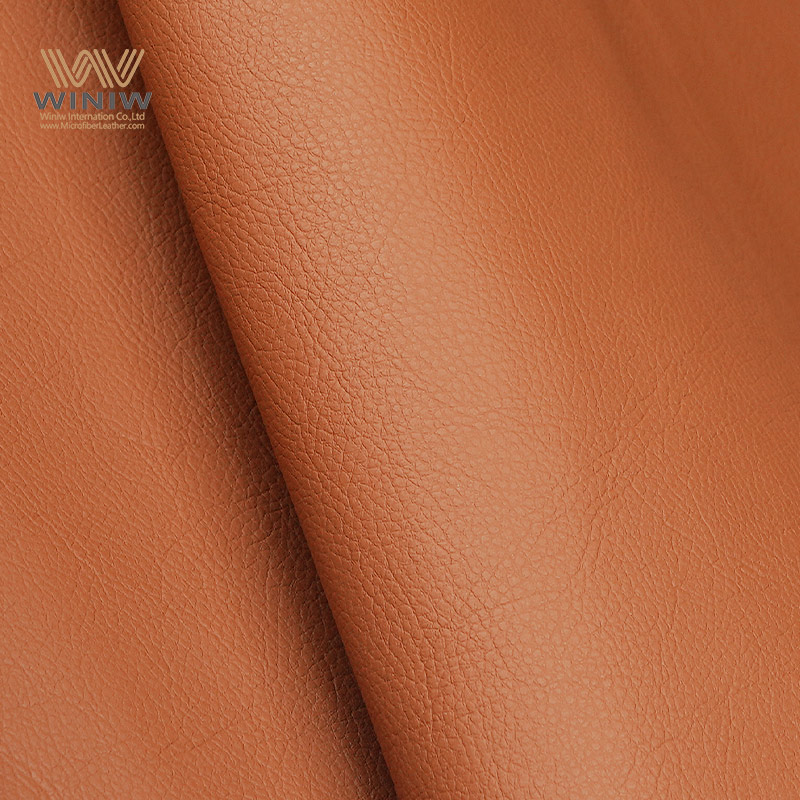
Notei que o couro sintético PU utiliza um revestimento de poliuretano sobre o tecido, enquanto o couro genuíno provém de peles de animais. O couro sintético PU custa menos, resiste a manchas e oferece mais opções de cores. O couro genuíno tem um toque mais natural e dura mais tempo com os devidos cuidados.
Uso um pano macio com água e sabão neutro para limpar a superfície. Evito produtos químicos agressivos ou esponjas abrasivas. Para manchas, limpo pontualmente com cuidado. Mantenho o material longe da luz solar direta para evitar o desbotamento.
Verifico a descrição do produto para saber se ele é resistente aos raios UV e à água. Alguns materiais de couro sintético PU funcionam bem em ambientes externos, principalmente aqueles com classificação náutica ou automotiva. Sempre pergunto ao vendedor sobre a adequação para uso externo antes de comprar.
Eu leio atentamente a descrição do produto e solicito as fichas técnicas. Peço amostras para verificar a textura e o suporte. Se o vendedor evita minhas perguntas ou usa termos vagos, considero isso um sinal de alerta.
Alguns materiais de couro sintético PU atendem a padrões ecológicos como OEKO-TEX ou REACH. Eu procuro por essas certificações. Também pergunto ao vendedor sobre o processo de fabricação e se há conteúdo reciclado.
Entro em contato com o vendedor imediatamente, enviando fotos dos danos. Guardo todas as confirmações de pedido e comunicações. Analiso a política de devolução e solicito uma substituição ou reembolso, conforme necessário.
Muitos fornecedores oferecem personalização. Pergunto sobre quantidades mínimas de pedido, prazos de entrega e custos adicionais. Envio uma amostra ou o código de cor para que possam combinar. Confirmo todos os detalhes por escrito antes de fazer o pedido.
Com os devidos cuidados, constatei que o couro sintético PU de alta qualidade dura de 3 a 5 anos ou mais. A durabilidade depende da espessura, do revestimento e do uso. Sempre opto por materiais com altas classificações técnicas para garantir maior vida útil.